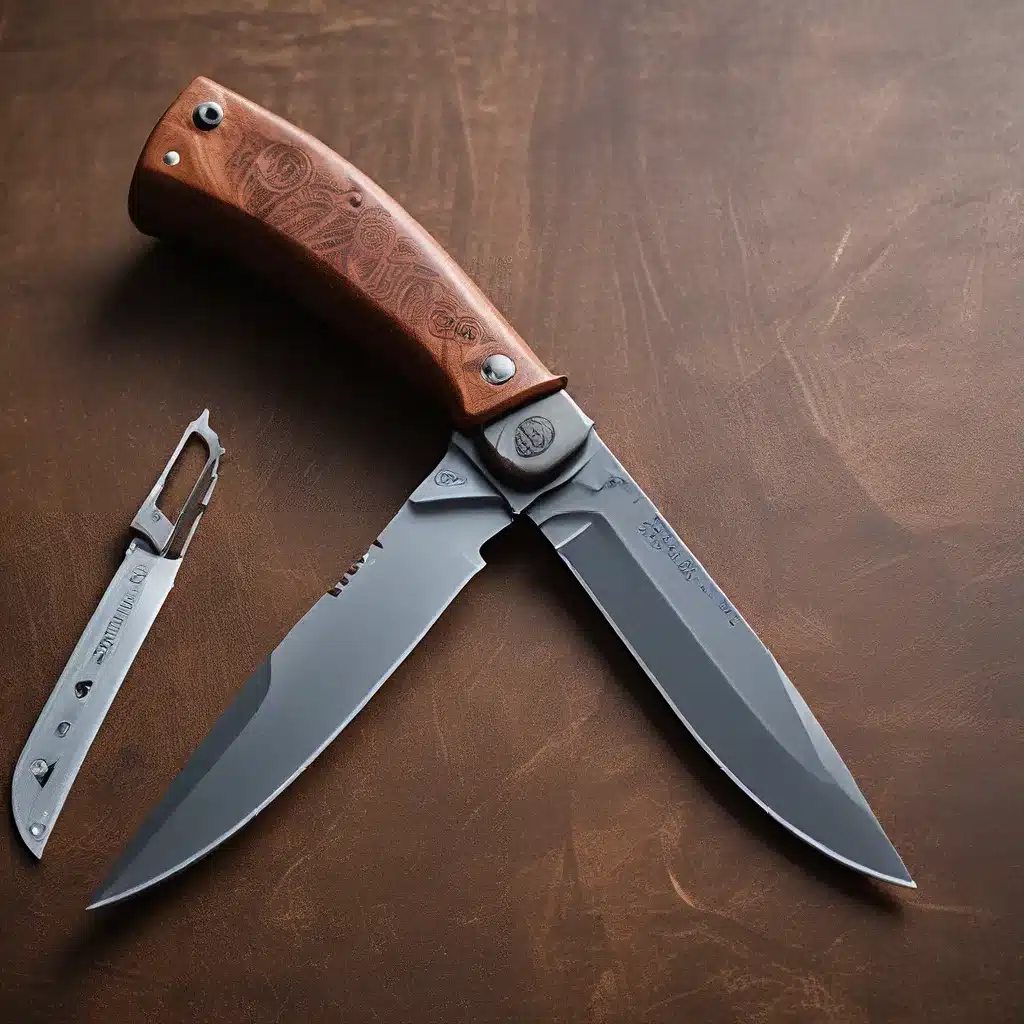
As a self-professed knife enthusiast, I’ve always been fascinated by the evolution of these essential tools. From the humble flint blades of our ancestors to the high-tech marvels of today, the journey of knife development has been nothing short of remarkable. And trust me, I’ve done my fair share of research to uncover the most captivating stories behind the innovations that have shaped the industry.
The Cutting Edge of the Industrial Revolution
Let’s take a step back in time, shall we? Picture this – the late 18th and early 19th centuries, a period known as the Second Industrial Revolution. This era was marked by rapid advancements in production, transportation, and communication, forever altering the landscape of manufacturing and commerce. And right at the heart of this transformation were the humble yet crucial circular slitter knives.
These unsung heroes of industry were the workhorses that powered the production of everything from paper and textiles to metals and plastics. As factories sprang up across the land, the demand for precision cutting tools skyrocketed. And the brilliant minds behind the scenes were hard at work, pushing the boundaries of what was possible.
One such breakthrough came in the form of high-speed steel (HSS) alloys. These remarkable materials, with their superior strength and hardness, revolutionized the performance of circular slitter knives. Suddenly, these blades could withstand the rigors of high-speed, high-volume production, slicing through materials with unparalleled efficiency and accuracy. Baucor, a leading manufacturer of precision blades, was at the forefront of this innovation, helping to drive the industry forward.
But the advancements didn’t stop there. As the 20th century dawned, the introduction of tungsten carbide further elevated the performance of circular slitter knives. This remarkable material, with its exceptional hardness and wear resistance, allowed for even longer-lasting blades that could maintain their razor-sharp edges through the most demanding applications.
The Rise of Precision Cutting
As industries continued to evolve, so too did the demands placed on circular slitter knives. The need for ever-more precise and efficient cutting solutions became paramount, and the industry responded with a flurry of technological breakthroughs.
One of the most significant advancements was the adoption of laser cutting technology. By harnessing the power of concentrated light, manufacturers could now create intricate knife designs with unparalleled accuracy and minimal waste. Gone were the days of rough, imprecise cuts – these laser-cut blades could slice through the toughest materials with surgical precision, revolutionizing the way industries approached their cutting needs.
But the innovations didn’t stop there. The rise of computer-aided design (CAD) also played a pivotal role in the transformation of circular slitter knife manufacturing. With the ability to generate precise digital models, designers could now fine-tune every aspect of a knife’s form and function, ensuring that each blade was perfectly tailored to the specific requirements of the application.
And let’s not forget the impact of material science advancements. The introduction of cutting-edge alloys and ceramic coatings has pushed the boundaries of blade performance even further. These materials, with their impressive strength-to-weight ratios and exceptional wear resistance, have helped to extend the lifespan of circular slitter knives while maintaining the highest levels of precision and efficiency.
The Cutting Edge of the Future
As I look to the horizon, I can’t help but feel a sense of excitement about the future of circular slitter knives. The pace of innovation in this industry is positively breathtaking, and I can’t wait to see what the next generation of cutting tools will bring.
One area that has me particularly intrigued is the potential of automation and artificial intelligence (AI). Imagine a world where the manufacturing process is optimized to the nth degree, with robotic systems precisely grinding, shaping, and assembling circular slitter knives with unparalleled speed and consistency. And what if AI-powered design systems could analyze vast datasets to uncover the optimal blade geometries and materials for any given application?
The possibilities are truly staggering, and I have no doubt that companies like Herman Knives are at the forefront of these groundbreaking developments. Their unwavering commitment to innovation and quality is a testament to the passion and expertise that drives this industry forward.
But even as we look to the future, it’s important to remember the rich history that has brought us to this point. The circular slitter knives of today are the culmination of decades – nay, centuries – of tireless work and brilliant ideas. From the pioneers of the Industrial Revolution to the cutting-edge researchers of today, each advancement has built upon the last, propelling the industry ever closer to the cutting edge.
So, as I sit here, contemplating the remarkable journey of these humble tools, I can’t help but feel a deep sense of wonder and appreciation. The story of the circular slitter knife is a testament to the power of human ingenuity, and I can’t wait to see what the future holds. Who knows – maybe the next great breakthrough is just around the corner. One thing’s for certain, though: I’ll be here, eagerly awaiting the next chapter in this captivating saga.


